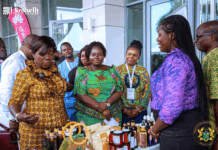Nana Kwame Gyamfi, Project Coordinator of the Cocoa Organic Farmers Association (COFA), has called for a Legislative Instrument (L.I) to regulate agricultural commodities standardization.
This follows a study conducted by COFA to establish the impact of the absence of L.I to guide agricultural commodities standardization using the cocoa and maize supply chain as a microcosm of Ghana’s agricultural landscape.
He indicated that the study was aimed at evaluating the existing standards in the cocoa and maize markets in terms of measuring units, grading and pricing and compare with standards set by Ghana Standards Authority.
Also, he said, the study intended at supporting the identification of options for introducing and developing a Legislative Instrument with a functional enforcement mechanism, to facilitate new standards in the marketing of maize.
Importance of standardization and grading
The Project Coordinator is of the opinion that in the wake of increasing trade globalization, standards and grades play an essential role by defining the procedures and their effects especially in developing economies.
According to him, standardization and grading are useful marketing functions as they facilitate buying and selling of goods by sample or description. Among the numerous advantages of standardized and grades he mentioned are, access to competitive and wider market; facilitating trading of goods on the commodity exchange as well as competitive access to market and that these goods could be used as a collateral security for loans.
Market standards, grading and pricing challenges
Again, Nana Gyamfi mentioned that the study revealed that a fundamental challenge to standardization of maize markets in Ghana, is the lack of enforcement and adherence to the standards set by the recognized institutional body Ghana Standards Authority (GSA).
In addition, he said an appreciable number of producers and end users are not aware of the standards developed by the GSA. The markets are not regulated as weights and measures used in trading are not standardized.
This, he pointed out has resulted in the use of varied weights from 50 kg to 132 kg depending on the buyer at the market centers and 155 kg at the farm gate. He added that grading of agricultural commodities especially grains was discretionary based on visual appearance, cleanness and moisture levels.
Nana Kwame Gyamfi has therefore called “not only education along the agricultural value chain but also a Legislative Instrument to enforce compliance and coordinate the activities of all institutions involved.”
The Project Coordinator, expressed gratitude to the BUSAC Fund for their financial support to COFA to conduct the study as part of the activities needed to pursue evidence-based advocacy for “legislative Instrument (LI) to regulate agricultural commodities standardization”.










